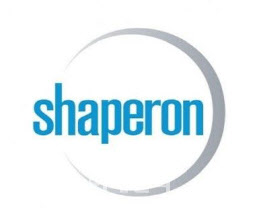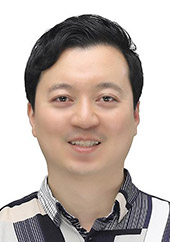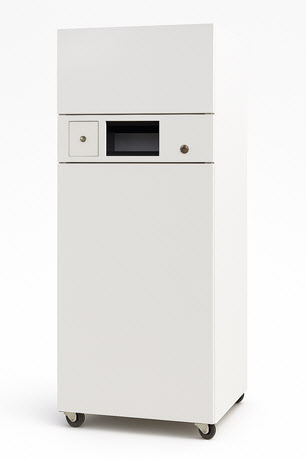Unauthorized reproduction or distribution is illegal and subject to criminal penalties.
Pharm Edaily enforces a zero-tolerance policy and will take strict action.
[Kim Jiwan, Edaily Reporter] On the 25th, news that Qurient had partnered with a Lonza subsidiary stirred excitement across Korea’s biotech and pharmaceutical sector.
In addition, Chaperon drew strong market attention by presenting a new therapeutic strategy for alopecia that outperformed existing treatments.
Organoid Science, meanwhile, announced the world’s first elucidation of the mechanism behind gray hair in collaboration with Cosmax, sending its stock price higher. The market hailed this achievement as a breakthrough in animal-testing alternatives.
Qurient joins hands with Lonza to develop ADCs Qurient’s share price surged after it announced a partnership with Lonza to develop antibody drug conjugates (ADCs).
 | | Kiyoun Nam, CEO of Qurient, at the company’s headquarters in Pangyo on January 21 (Photo=Edaily, reporter Na Eun-kyung) |
|
According to KG Zeroin MPDoctor, Qurient closed at 15,860 won, up 860 won (5.73%) from the previous day.
The company signed a license agreement with Synaffix, a Lonza subsidiary and leading ADC platform provider, to co-develop dual-payload ADCs.
The project will combine Qurient’s CDK7 inhibitor with Synaffix’s exatecan-based payload technology to pioneer a novel therapeutic option for refractory solid tumors.
Dual-payload ADCs are designed to simultaneously deliver two different mechanisms of action, enhancing efficacy, reducing resistance, and minimizing toxicity to healthy tissues.
Under the agreement, Qurient gains access to Synaffix’s GlycoConnect, HydraSpace spacers, and exatecan linker payloads, while Lonza will support manufacturing.
CEO Nam Ki-yeon commented, “The combination of our CDK7 inhibitor with Synaffix’s SYNtecan payload opens a new horizon for targeted antibody therapeutics. This partnership will also enable us to expand to more targets and antibodies.”
Synaffix CEO Peter van de Sande added that the deal showcases the versatility of the ADC platform. Qurient currently holds pipelines including Mocasyclip (Q901), Adrixetnib (Q702), and Telacevec (Q203) across oncology, immune, and infectious diseases, and the company expects this collaboration to strengthen its foothold in global precision oncology.
Chaperon’s alopecia drug emerges as a ‘game changer’ Chaperon’s targeted alopecia treatment has been hailed as a “game changer,” with shares climbing for consecutive sessions.
 | | (Photo = Chaperon) |
|
Chaperon closed at 2,955 won, up 195 won (7.07%) from the previous day.
On the 24th, the company unveiled preclinical results of its candidate SH1010337 at the European Academy of Dermatology and Venereology. The drug was discovered using Chaperon’s proprietary AI drug-discovery platform, AIDEN.
Alopecia areata is an autoimmune disorder that is difficult to treat and prone to relapse. Current JAK inhibitors face challenges with side effects, long-term safety, and high costs.
SH1010337 suppresses inflammasome hyperactivation, boosts regulatory T-cells, restores immune balance in the scalp, and promotes follicle regeneration. In preclinical models, the compound reduced alopecia lesions by 74%, outperforming JAK inhibitors (62%).
AIDEN’s advanced algorithms drove candidate design by accelerating activity and toxicity predictions and optimizing physicochemical properties. This breakthrough also validated the elusive GPCR19 target, which many global pharma players had failed to drug.
Chaperon emphasized, “Unlike JAK inhibitors, our AI-based GPCR19 therapy offers advantages in immune balance and long-term safety, with potential applicability across autoimmune diseases.” The company further noted that SH1010337’s parent molecule, the atopic dermatitis therapy NuGel, has already shown efficacy and safety in Phase 2 trials, supporting its translational potential.
The global alopecia areata market is expected to grow from USD 3.8 billion (\5 trillion) in 2025 to USD 6.9 billion (\10 trillion) by 2034.
Organoid unveils world’s first mechanism of gray hair Organoid Science (Organoid) saw shares rise after announcing the world’s first discovery of the biological mechanism behind gray hair.
The stock closed at 37,600 won, up 2,350 won (6.67%) from the previous session.
 | | Yoo Jong-man, CEO of Organoid Science, explains the company’s products during an interview with Edaily in June. (Photo = Organoid Science) |
|
Organoid and Cosmax jointly conducted a study that received global recognition at the International Federation of Societies of Cosmetic Chemists (IFSCC) Congress held in Cannes, France, on September 18, where it won the Basic Research Award.
The research used human embryonic stem cell-derived organoids capable of generating real hair, revealing that pigment cell dysfunction and oxidative stress drive hair depigmentation. This marks a breakthrough, as traditional 3D skin models lacked hair-forming capacity, limiting alopecia and gray-hair studies.
A company representative stressed, “It is highly significant that Korean researchers have been recognized for the world’s first achievement in fundamental hair research.”
Organoid CTO Lee Kyung-jin added, “This collaboration with Cosmax allowed us to achieve a world-first milestone. The findings not only open new directions for gray-hair and alopecia research but will also contribute directly to therapeutic and functional cosmetic development.”
Since 2021, Organoid and Cosmax have partnered on projects including alopecia models, MFDS assignments, and standardized toxicity testing for skin organoids. The collaboration has been lauded as an innovative approach to replacing animal testing.





![ABL Bio Boosts Tech Export Potential Amid Big Deal, Biotech Demand Soars[K-bio Pulse]](https://image.edaily.co.kr/images/vision/files/NP/S/2025/11/PS25111201284b.jpg)

![[K바이오 패권 전쟁]기술도입으로 돌파구 찾는 K바이오②](https://image.edaily.co.kr/images/vision/files/NP/S/2025/11/PS25111200934b.jpg)
![[K바이오 패권 전쟁]서동철 명예교수 “한국, 기술도입으로 ‘전공분야’ 찾아야”③](https://image.edaily.co.kr/images/vision/files/NP/S/2025/11/PS25111200896b.jpg)
![[K바이오 패권 전쟁]‘지피지기면 백전백승’ 빅파마 관심 쏠린 타깃은⑤](https://image.edaily.co.kr/images/vision/files/NP/S/2025/11/PS25111200894b.jpg)


